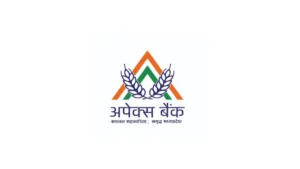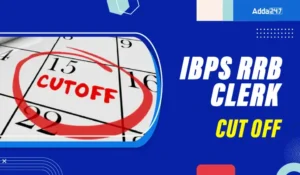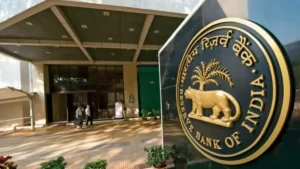Dear Readers,
Welcome to the world of Banking and Financial Awareness. With SBI PO Prelims round the corner, it should be your priority to cover every aspect of Banking and Financial Awareness on daily basis. Let us see how many questions you attempt accurately.

Q1. Which of the following is a correct statement?
(a) Normally no interest is paid on current deposit accounts
(b) Interest is paid on current accounts at the same rate as term deposit accounts
(c) The rate of interest on current account and savings account are the same
(d) No interest is paid on any deposit by the bank,
(e) Savings deposits are the same as current deposits
Q2. What do you understand by the term ‘Mortgage’?
(a) Sale of moveable security in the event of default by the borrower
(b) Registration of charge with the Registrar of Companies
(c) Making the security of immovable property available as a cover for a home loan by the borrower
(d) Registration of charge with the Regional Transport Authority
(e) Returning of the security to borrower by the bank of receipt of full payment
Q3. Which of the following is NOT a source of funds of a commercial bank?
(a) Capital
(b) Borrowings from RBI
(c) Call money
(d) Deposits
(e) Cash reserves with RBI
Q4. The Banking Ombudsman is-
(a) is in charge of bank loan for buses
(b) fixes the rates of interest for loans
(c) resolves complaints of customers
(d) issues licences for new bank branches
(e) is the head of all nationalized banks
Q5. “Scheduled bank” means a bank-
(a) incorporated under the Companies Act, 1956,
(b) authorized to the Banking business,
(c) governed by the Banking Regulation Act, 1949,
(d) Included in the Second schedule to the Reserve Bank of India Act 1934
(e) None of the above
Q6. Which of the following is not a function of the RBI?
(a) Maintaining Forex
(b) Deciding Bank Rate, CRR and SLR from time to time
(c) Opening Savings Accounts for general public
(d) Prescribing the Capital Adequancy Ratio
(e) Currency Management
Q7. The names of which of the following rates/ratios cannot be seen in financial newspapers?
(a) Bank Rate
(b) Repo Rate
(c) Statutory Liquidity Ratio
(d) Cash Reserve Ratio
(e) Pulse Rate
Q8. Ten-rupee notes contain the signature of…………….?
(a) Finance Secretary, GOI
(b) Chairman, State Bank of India
(c) Governor, Reserve Bank of India
(d) Finance Minister, GOI
(e) Prime Minister
Q9. Banking and financial services all over the world are regulated usually by the Monetary Authority of the land. Who controls this function in India?
(a) Ministry of Finance
(b) SEBI
(c) RBI
(d) IRDA
(e) FEDAI
Q10. For which of the following reasons RBI has decided to undertake mid-quarter policy reviews?
(1) To re-align its policies
(2) To take steps and ensure smooth flow of credit
(3) To provide guidance to the economy
(a) Only (1)
(b) Only (2)
(c) Only (3)
(d) All (1), (2) & (3)
(e) None of the above
Q11. Expand the term ALM as used in Banking/Finance sector:
(a) Asset Liability Management
(b) Asset Liability Maturity
(c) Asset Liability Mismatch,
(d) Asset Liability Manpower
(e) Asset Liability Maintenance
Q12. For repayment of loan availed from Banks/NBFC we come across a term known as EMI. What does it stand for?
(a) Equated Money index
(b) Easy Money Installment
(c) Equated Monthly Installment
(d) Equal Monthly Installment
(e) Equal Minimum Installment
Q13. The loan amount in case of a reverse mortgage is decided taking into account which of the following?
(1) Value of House property,
(2) Age of the borrower
(3) prevalent Interest rates.
(a) only (1),
(b) Only (2),
(c) Only (3),
(d) All (1), (2),& (3)
(e) None of the above
Q14. In India, the RBI prescribes the minimum SLR level for Scheduled Commercial Banks in India in specified assets as a percentage of Bank’s-
(a) Net Demand and Time Liabilities
(b) Demand Liabilities
(c) Time Liability
(d) All of the above
(e) None of the above
Q15. The methods of credit control by the Reserve Bank of India may be broadly divided into two parts. These are:
(a) open and close,
(b) Quantitative and Qualitative
(c) monetary and fiscal
(d) rural and urban
(e) None of the above


 MP Apex Bank Recruitment 2026 Notificati...
MP Apex Bank Recruitment 2026 Notificati...
 IBPS RRB Prelims Clerk Cut Off 2025, Che...
IBPS RRB Prelims Clerk Cut Off 2025, Che...
 RBI Office Attendant Recruitment 2026 No...
RBI Office Attendant Recruitment 2026 No...








